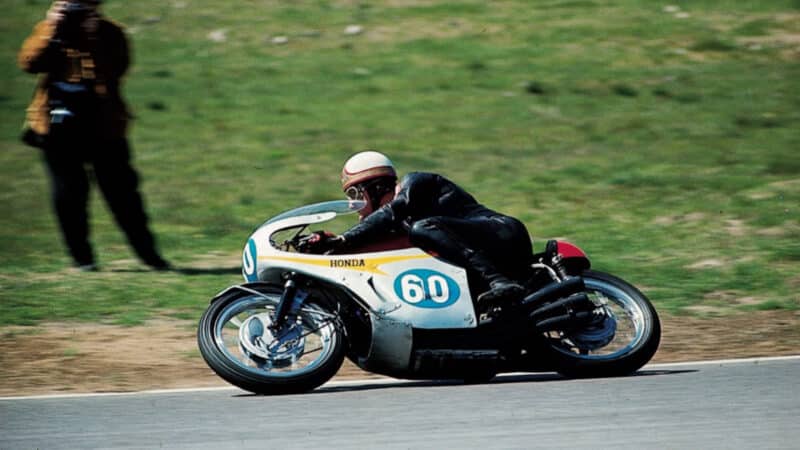Happy 75th birthday to the world’s most important motorcycle brand
Honda is not merely the only company that contests both MotoGP and F1, it is also the only company that contests superbikes, endurance, motocross, trials, rallies, the world touring car championship, IndyCar, Super GT, F2 and so on. No other company comes within a million miles of that.
Why was Honda-san so good at what he did? He was a natural engineering genius, who knew what he wanted and put engineering before profit, which is why Honda nearly went bankrupt several times in its early years. The company’s future was only assured when he hired Takeo Fujisawa to look after its finances. Honda-san’s maxim was always this: build a well-engineered product and people will buy it.
In 1969, a decade after Honda became the first Japanese manufacturer to race in GPs, it launched the world’s first superbike, the four-cylinder CB750, which transformed the motorcycling landscape.
This machine was the basis of Honda’s racing activities for the next decade, which brought victories in the Daytona 200, the Le Mans 24 Hours and the Bol d’Or. Anywhere those horrible two-strokes wouldn’t spoil the fun.
However, by the late 1970s Honda importers around the world were telling their Tokyo contacts that the company must return to GP racing, because only success in the premier world championships makes the headlines that sell motorcycles.

Honda dominated GP racing throughout much of the 1960s, with a mesmerising line-up of machinery, including the 250 six, which Mike Hailwood rode to the 1966 and 1967 250cc world titles
Honda
Honda-san hated two-strokes – dirty and smelly – so returned to GP racing with a four-stroke, despite the fact that everyone else had given up four-strokes, because a two-stroke makes twice as many power strokes.
So Honda built a four-stroke that revved twice as high as the two-strokes. Enter the oval-piston, 32-valve NR500 V4, which reached the giddy heights of 22,000rpm but never scored a single world championship point in more than two years of GP racing.
In 1982 Honda admitted defeat and built a three-cylinder 500cc two-stroke, creating HRC (the Honda Racing Corporation) at the same time. The NS500 triple won the company’s first premier-class world championship the following year.
“He said, ‘Who designed this?!’ A bloke stuck up his hand and the cylinder was hurled across the room”
Honda-san was affectionately known as The Old Man (like Enzo Ferrari) but he wasn’t all avuncular. Tales of his rages are legendary, because you don’t get to build the world’s biggest automotive empire by being nice to everyone.
Former HRC engineer Stuart Shenton – now Rory Skinner’s Moto2 crew chief – remembers one of The Old Man’s last visits to a GP in 1985.
“Mr Honda came to Jarama and we were told he would be visiting [Takazumi] Katayama’s garage,” recalls Shenton. “We were told what to do and where to be, then we stood there waiting. Mr Honda arrived and laid into Takeo Fukui [who…
Read More: Happy 75th birthday to the world’s most important motorcycle brand 2023-09-20 17:01:39
